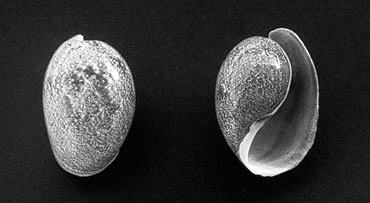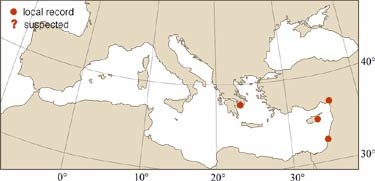
|
Relevant Synonyms
Misidentification
|
|
| photo: E. Vardala-Theodorou |
|
SHORT
DESCRIPTION
color :
varies from tan or pinkish to brown and greenish grey, closely and finely mottled or speckled all over with pinkish-grey, usually with darker blotches, irregular or V shaped; occasionally with two broad indistinct bands on body whorl; interior and parietal callus are white; fresh shells covered with a thin yellowish periostracum; soft parts vary from light cream to orange.
common size :
shell rather large for the family, measuring 40-60 mm. |
DISTINGUISHING CHARACTERISTICS
BIOLOGY / ECOLOGY
habitat :
not seen alive in the Mediterranean, where only few empty shells have been found. This species lives intertidally or in shallow water, mainly in sandy mud with seagrass; in Cyprus at 9 m depth. |
|
1st
Mediterranean record
|

|
|
DISTRIBUTION
|
ESTABLISHMENT SUCCESS
speculated reasons for success :
|
|
|
MODE OF
INTRODUCTION |
IMPORTANCE TO
HUMANS |
|
KEY
REFERENCES
|
|
|
 Bullaria ampulla (Linnaeus, 1758)
Bullaria ampulla (Linnaeus, 1758)